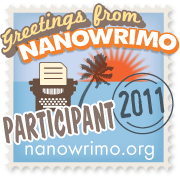As part of the process of plotting a novel, I decided to write proper character profiles. Previously, I’d had little sketches and a note or two about them, but not a full study. That’s fine for the main character who I know quite well, but it wasn’t good enough for some of the smaller but still important characters. I needed to know more about them.
I probably won’t describe my characters’ physical attributes in great depth* but I still need to know what they look like. That means knowing their eye colour, hair-cut, size, clothing style and grooming habits. One of my characters, for example, is written with wild, fluffy, ginger hair. In my head, however, he’s got dreads. The character description sorted that out. (He used to have dreads, he now has long hair. Towards the end of the book, he’ll grow a beard. )
One of the most fun aspects of writing down what my characters look like, was surfing websites looking for faces and bodies to match them to. Keith, one of the major characters, is described early on as being startlingly good-looking. So I visited a couple of modelling sites to find a face for him. To me, Keith looks like someone from a perfume ad, one of those ridiculously perfect guys with chiseled features and waxed pects. Model agencies should have dozens of those, I thought. But no, I can’t find any. There are lots of interesting-looking men but I can’t find one who looks just right. So Keith remains an image in my mind. Other characters were much easier to find: finding Stephen Fry in a velvet cloak and fez was the work of minutes.
Of course, it’s not all about what my cast of characters look like. The most important aspects of the profiles are the characters’ background and motivations. I’ve come across a number of problems – inconsistencies, bits of history that doesn’t work, the realisation that two characters that didn’t know each other probably went to school together – and learned useful things about my characters, and the world they live in, fixing them.
Writing character profiles doesn’t feel like writing a novel, but it valuable work, and involves writing. The process has given me useful insight into my cast. It was so useful, in fact, that I also wrote organisation profiles too. A number of organisations feature in the story and now I know how they are structured, who works where and what their purposes are.
And when I forget, in mid-April, I can go back and remind myself.
* Personally, I find extensive character description and constant updates on what people are wearing tiresome, but I accept that at a minimum, readers need to know whether a character is male or female, tall or short, young or old. It helps build the story’s world in the mind. If it’s not clear in my head, I can’t put it on the page and readers will quickly get confused.
 This week I made a number of important changes. Not to the plot, as such, but to how I work.
This week I made a number of important changes. Not to the plot, as such, but to how I work.